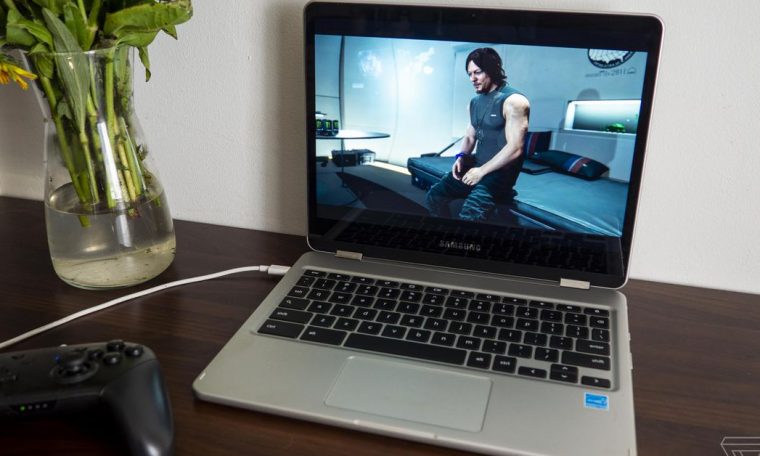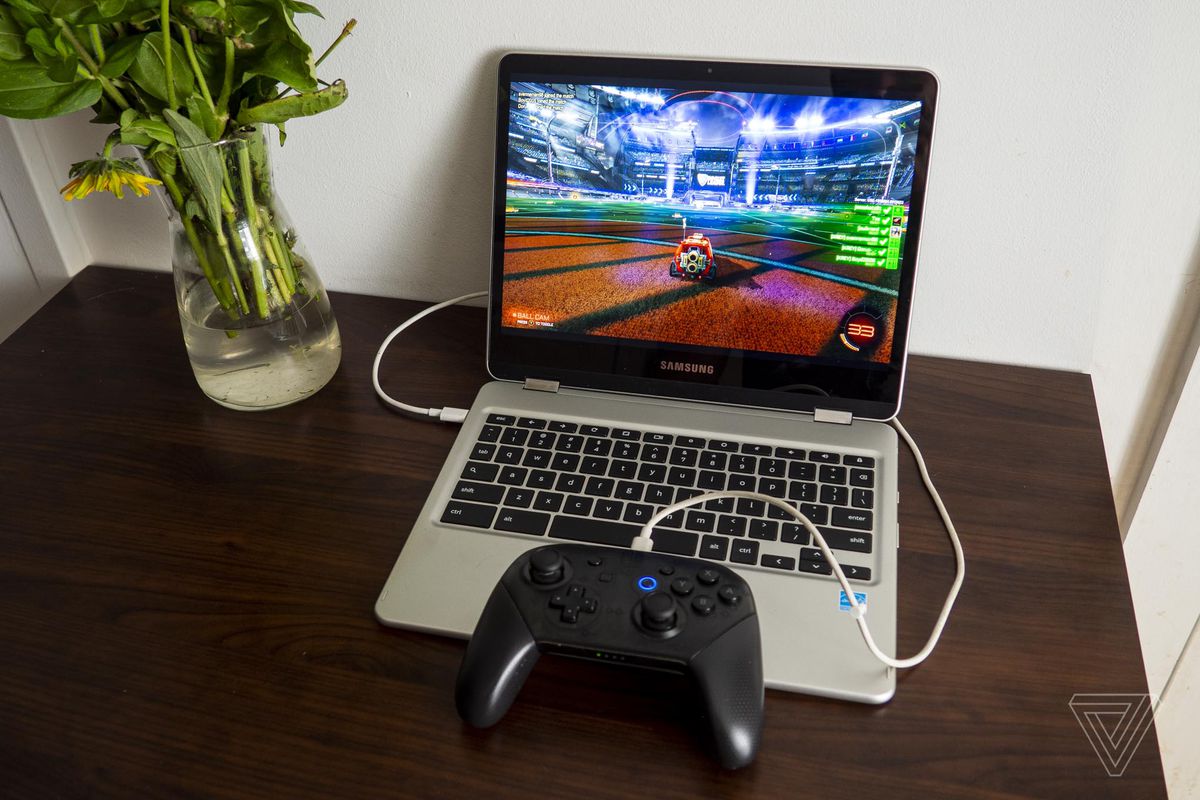
I just played Death Stranding on my wife’s beat-up Samsung Chromebook Plus. That’s because Nvidia just made it possible to do so with its GeForce Now cloud streaming service, which launched in beta for Chrome OS today. While gaming natively isn’t necessarily a strong suit of Chrome OS, support for Google’s Stadia and GeForce Now means that you can probably access many of the games in your back catalog from the cloud, wherever you are with your Chromebook. Nvidia is keeping tabs on supported games right here.
Granted, this assumes you have one that’s capable enough to provide a decent experience, along with a mouse or gamepad plugged in for good measure since Chromebook trackpads usually aren’t great.
What’s cool about the beta is that Nvidia isn’t preventing any Chromebook user from going to play.geforcenow.com and giving it a try themselves, although the company does offer some recommended specs that it says ensure a good experience:
- CPU: Intel Core M3 (seventh gen or later) or a Core i3, i5, or i7 processor
- GPU: Intel HD graphics 600 or higher
- RAM: 4GB or higher
- Plus at least 15Mbps internet (25Mbps recommended)

To that end, it shared a bunch of models that Nvidia has tested internally and confirm provide a good experience. It’s worth noting that some of these don’t match its recommended specs in every department:
- Acer Chromebook 15 CB3-532-C4ZZ
- Acer Chromebook 715*1
- Acer Chromebook Spin 13
- Asus C101P Flip
- Asus Flip C302CA
- Asus Chromebook Flip C434*
- Google PixelBook
- Google PixelBook Go
- HP Chromebook x360*
- Lenovo Yoga Chromebook C630
- Samsung Chromebook 3
- Samsung Chromebook Plus*
- Samsung Chromebook XE350XBA (Chromebook 4)*
- HP 15-de0517wm*
(Note: the asterisk denotes models where Nvidia says voice chat isn’t recommended)
I spent time testing it out the beta on our 2017 Chromebook Plus, which straddles the line in terms of meeting the recommended specs. It has a beautiful 2400 x 1600 resolution 3:2 aspect ratio display that still looks fantastic today, and it meets the 4GB RAM requirement. But I was more than a little worried about its Rockchip OP1 ARM processor, despite it being optimized at the time for Chrome OS, as my colleague Dieter Bohn dug up.
I briefly tested out Death Stranding and Rocket League through Steam and Control through the Epic Games Store to see how each looked and ran. I have fairly speedy internet (250Mbps down, 25Mbps up), and since I’m at home, I was seated pretty close to our Wi-Fi router. My experience was better than I expected from our then-$350 Chromebook.
Once I went to the front of the queue for a virtual rig and got booted into each game, the performance was great. Generally, the games I tested seemed to swing between 40 and 50 frames per second. It wasn’t a consistent, smooth 60 frames per second that I love to see. Still, with a gamepad plugged in and headphones on, I sometimes forgot I was streaming games over the cloud. Loading times were usually very fast, and the games themselves looked good on their recommended graphical settings.
Visuals aside, the input lag from my wired Nintendo Switch Pro controller was noticeable throughout my time testing GeForce Now on Chrome OS. It was less of an issue in Control, where the movements are a little slower, but it was kind of a deal-breaker in Rocket League, especially if you’re playing online matches. I should again note that I played exclusively over Wi-Fi, which Nvidia doesn’t suggest anyone do if they’re trying to get the best results. I likely would have had an even better experience in terms of input lag and visual fidelity if I’d had an Ethernet to USB-C adapter.

One nitpick as someone using a 3:2 aspect ratio display: it was difficult to get each game to match my screen’s resolution. Nvidia’s GeForce Now settings let me adjust my preferred resolution to a 16:10 aspect ratio, which reduced the black bars I saw with the default 16:9 aspect ratio presentation. That was about as good as it got, and for a temporary “game while I’m away from my PC” experience, that’s good enough for me. If your Chromebook has a 16:9 aspect ratio screen (most of them do), you shouldn’t need to do any tweaking.
I’d love to test out the service on a more capable machine, like the new Acer Chromebook Spin 713, and a weaker one, like the Samsung Chromebook 3 that released in 2016. It goes without saying that more powerful hardware will make for a better experience, but I’m curious just how low you can go in price and still get relatively smooth gameplay.
You can join the service for free, though each game will take a few minutes to boot into, and sessions will be capped at one hour each. If you have a Chromebook, give it a try and let us know in the comments how your experience was.
Photography by Cameron Faulkner / The Verge



